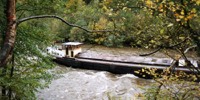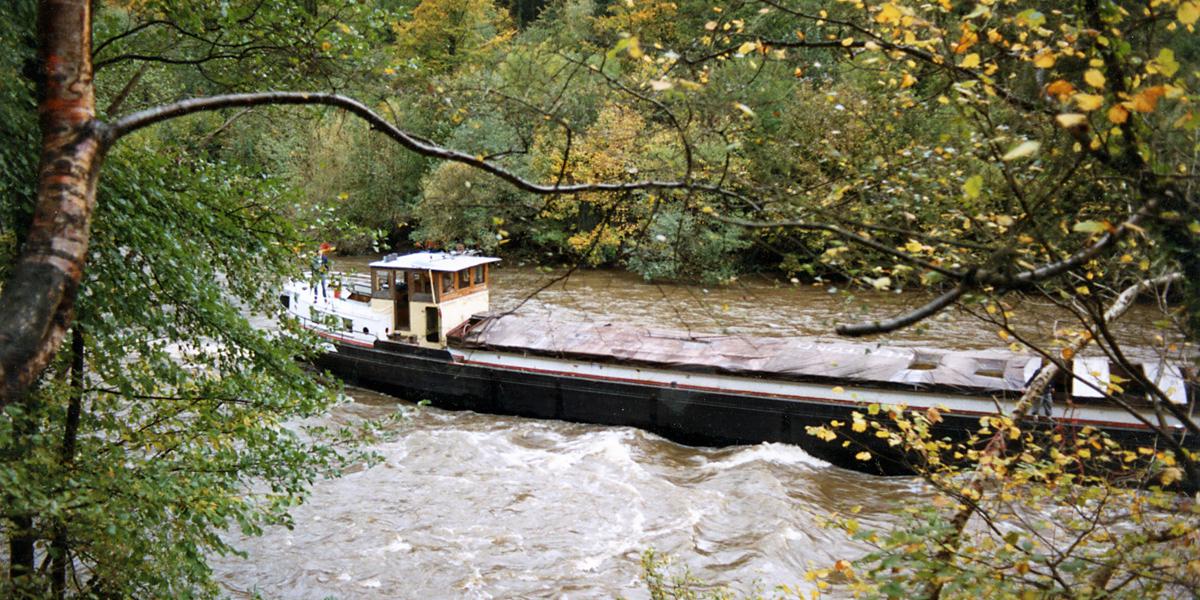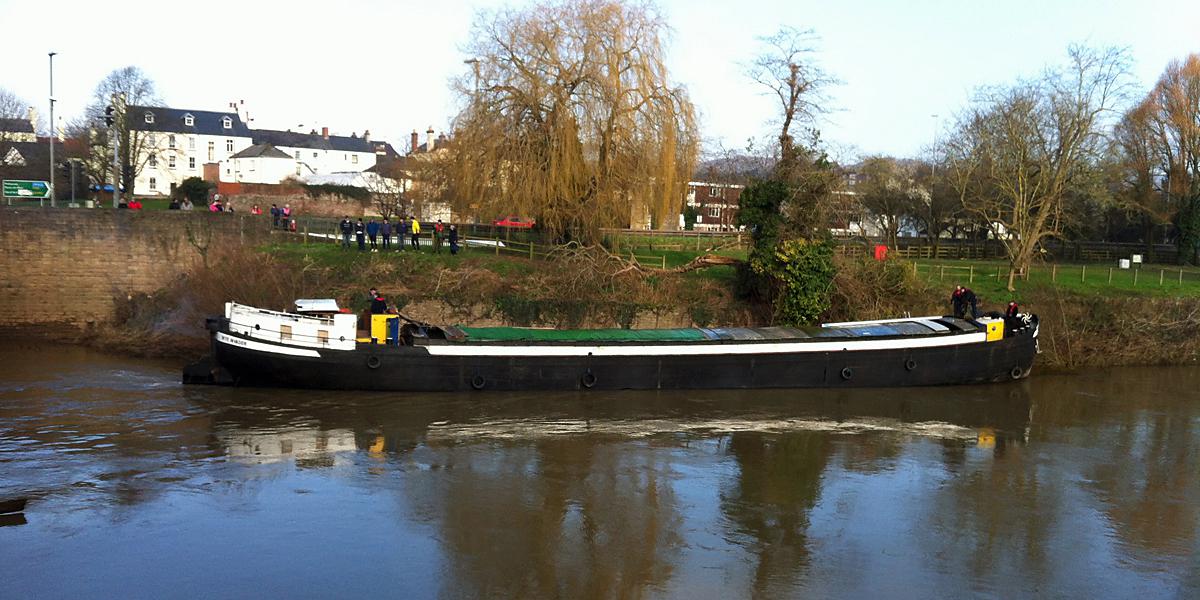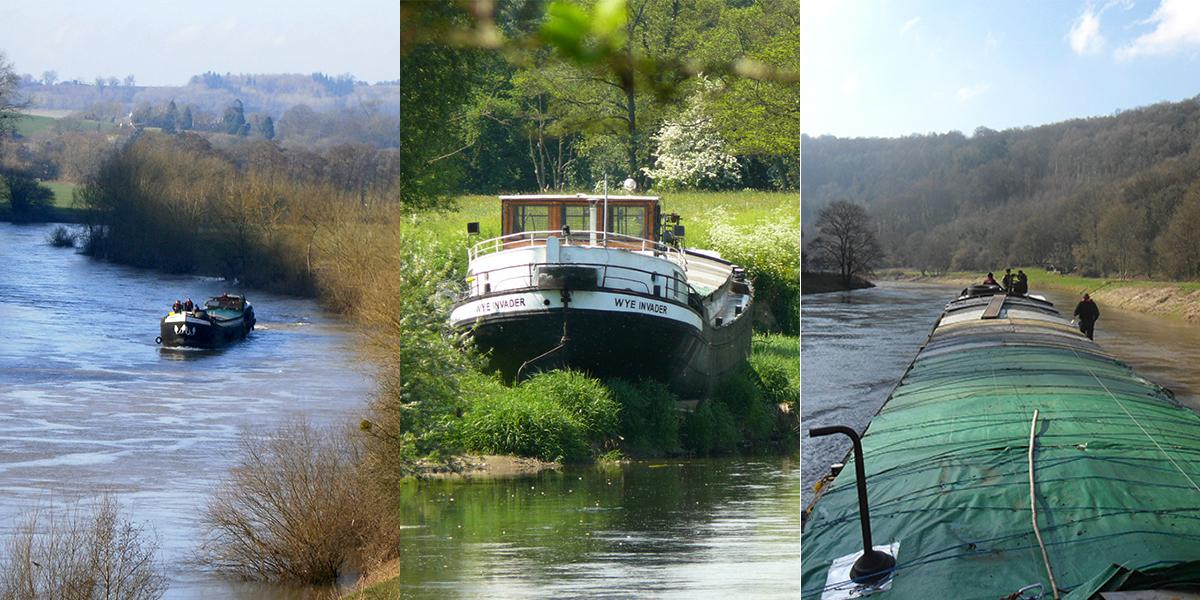Wye Invader - The Impossible Journey?
The Story

In 1970 she was owned by the Hooiveld family who re-named her “Zwerver” and the family lived on board for several years. The Barge had several more owners in the years that followed and was finally bought as “Zilvermeeuw” by Frank Barton, a garage owner from Hereford who re-named her “Wye Invader” and who had plans to turn her into a floating restaurant moored in Hereford, UK. Planning Permission was later granted for this.
The Barge crossed the Channel, rounded the South Coast and turned into the River Severn Estuary. At Chepstow she joined the River Wye, navigating several tight, well known bridges and then the famous Symonds Yat Rapids. The journey to Hereford of 75 miles was to take longer than planned due to low river levels that summer and she reached her final mooring just above the Old Wye Bridge, Hereford on the 11th November 1989, the actual journey time was 20 hours spread over the 6 month period. The magazine Waterways World published 2 articles about the Wye Invader you can read here.
TL;DR
The idea was to see if it was possible to navigate from Sharpness to Tintern via the Tidal River Severn and the River Wye on one tide.
Scheduled to depart 2 hours before high water on the 7th July 2016, the distances involved were 10 miles to the Severn Bridge then around 8 miles upstream to Tintern. High tide was 8 meters at Sharpness and 8 meters at Tintern. The time I calculated for the 18 miles was 3 hours and 15 minutes, and that allowed for Wall Weir, the one in the film clip that is only partly destroyed and therefore does not empty as quickly as the river above and below.
All the Weirs on the river from Hereford down the Wye were taken down by Act of Parliament in 1734 and removed completely, apart from Symonds Yat and all those below the tidal limit from Biggsweir down, a total of 6 that were only partially destroyed, this allowed them to be used to mount salmon traps and also to slow down the speed that the tide empties out, as far down as Chepstow.
However, the reason for showing the film clip is to stress the importance of sticking to your navigation plans on the River Severn and Wye, and that you have researched the journey knowing what your vessel is capable of, being able to complete each leg in the time you planned for and to arrive before you lose the tide and dry out as we did on Wall Weir on the River Wye!
As can be seen from the film clip in real-time, just 5 minutes earlier and we would have been over Wall Weir and around 100 metres further up the river towards Tintern.
What I will mention is, I had booked the lock for departing 2 hours before high water, we were informed that a yacht was on its way in and, given the option of waiting until it arrived or leave now, I choice to wait.
Knowing what I know now, it was an error on my part, I should have departed when I had planned to do so, you only have a finite amount of tide time available and, as soon as you leave the dock the clock is ticking and you don't get that time back that. When the channel is a navigation channel that is marked for International Regulations for Preventing Collisions at Sea 1972, also known as Collision Regulations (COLREGs), there was no reason to sit and wait, Time and Tide wait for no one, we live and learn.



